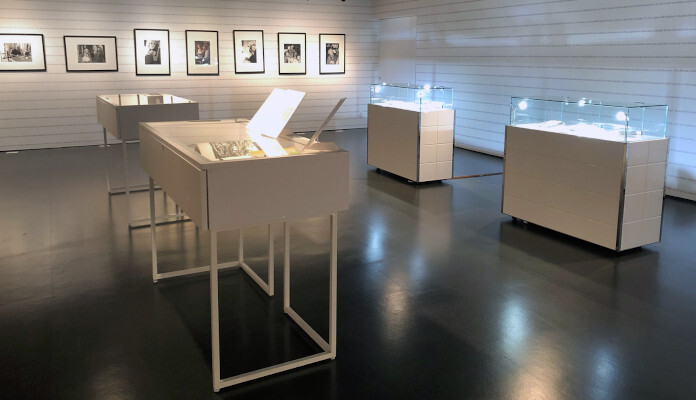Advertisements
[ad_1]
In 1911, Picasso told the poet Apollinaire: “I want to make it clear that, however, I detest exoticism. I never liked them [in art] the Chinese, the Japanese or the Persians. Well, the artist from Malaga arrives today at the Instituto Cervantes in Tokyo with Picasso, writeran exhibition created in conjunction with the Museo Picasso Málaga about the most poetic facet of the artist. The exhibition, which has already visited Beijing and Shanghai, brings together facsimiles, photographs, original engravings and publications. Furthermore, it includes objects and documents from its influence and relationship with Japan.
Until a few years ago, says creditor Kenji Matsuda, art historians did not question the authenticity of the emphatic words quoted a few lines above. “It is also known that Picasso reacted in a similar way when asked about the influences on his black sculptures.. Even in the case of the painter's own words, it is difficult to take them literally”, he believes.
Picasso, writerwhich can be seen in the Japanese capital until September 30th, reflects on a more unprecedented aspect of the artist's genius and investigates how Picasso used pencil and ink with originality to paint words and transform them into pictograms that evoke his world and memories. Across facsimile copies, photographs and publications related to his literary creation, poems and a documentary produced for this occasion, several Spanish authors and intellectuals, including the director of the Instituto Cervantes, Luis García Montero, reflect on Picasso and his written work.

Matsuda remembers that Picasso and Japanese erotic engravingexhibition held in 2009 at the Picasso Museum in Barcelona, and Picasso and Japanese art at the Izumi Kuboso Memorial Arts Museum in 2017 “They show how the established belief that Picasso's art is not influenced by Japanese art is beginning to crumble.”. In this sense, the exhibition that can now be seen in Tokyo “is an opportunity that drives this trend”.
When Picasso arrived in Barcelona at the end of the 19th century, Japonism had already penetrated Catalonia. Before beginning his blue phase, Picasso's work suggests an influence from Japanese art. And it is “from the pink phase onwards that the use of Japanese art in its production can be proven through various evidences”. Therefore, this sample “It focuses on the 1930s, a period of direct and frequent contact with the Japanese and Japanese culture.”
In 1932, during the Paris-Tokyo Emerging Art Exhibition, Picasso not only provided three of his works, but also actively collaborated with André Salmon, inviting other painters to participate. At that time he read the book to his son Kikakou's haiku, translated by Kuninosuke Matsuo. Additionally, biographer John Richardson tells the anecdote of when Picasso hired a Japanese model for a short period of time. “The influence of Japanese art makes us imagine a 19th century 'Japonism' that takes advantage of ukiyo-e to explore new means of expression. Although, the influence he receives is not limited to ukiyo-e and shunga (erotic art), but extends to illustrated books, sumi-e (Indian ink drawings), calligraphy, haiku, origami, kimono and also ceramics”, argues Matsuda.
Thus, to illustrate Pablo Picasso's relationship with his host country and their mutual inspiration, a facsimile of a letter from the Japanese writer Kuninosuke Matsuo to Pablo Picasso is displayed, which belongs to the collection of the Musée national Picasso-Paris, together with six original ceramics by the artist, courtesy of collector Toshiyasu Fujinawa, president of the company Yoku Moku. To complete the exhibition, a catalog was published with texts by Japanese experts who enriched the project in its Japanese phase, and it is expected that Picasso's play will be staged in Japanese next year. Desire caught by the tail.



